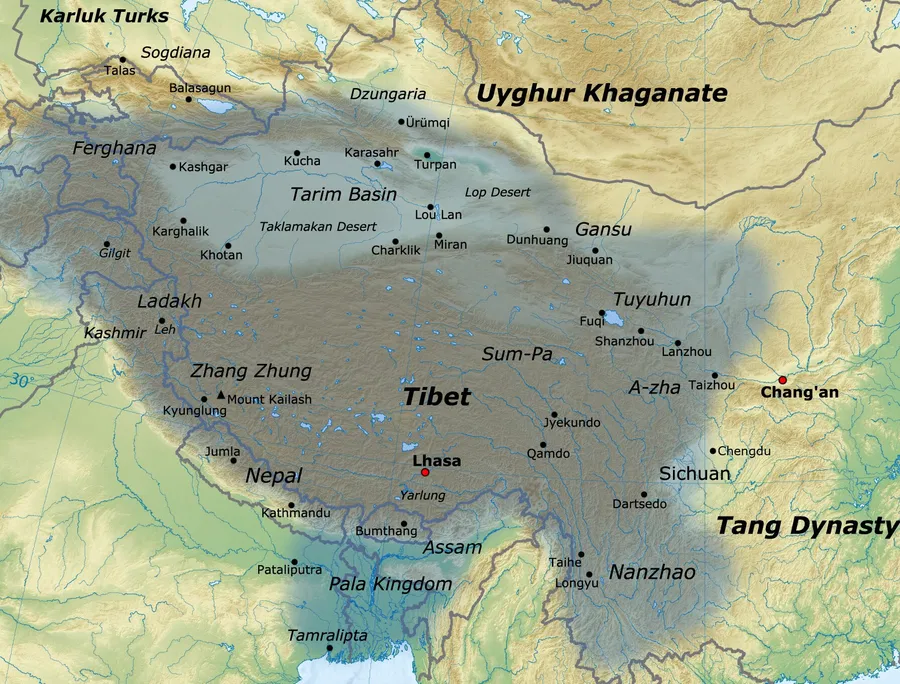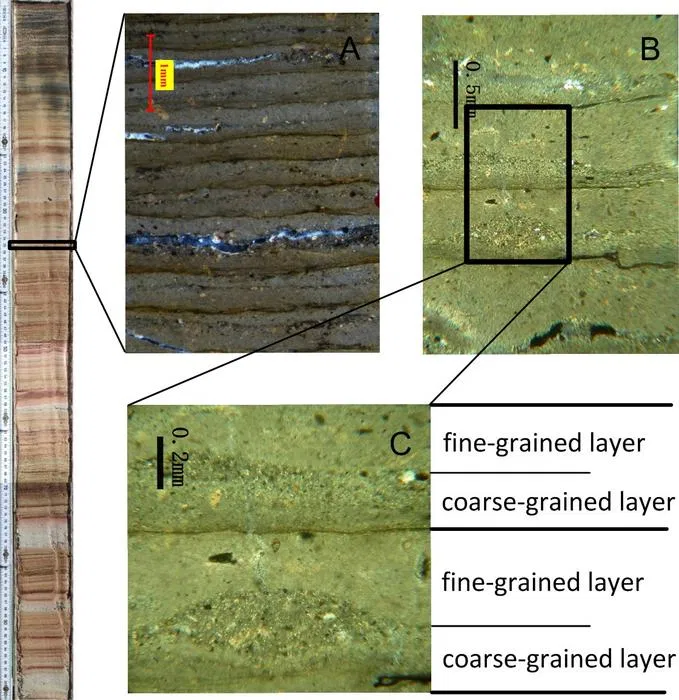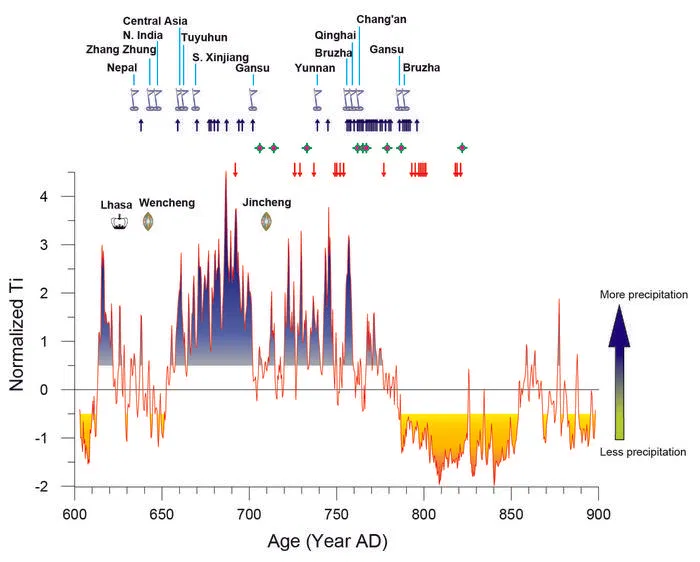
MEDEVIALISTNET
Between the 7th and 9th centuries AD a new empire emerged in medieval Asia – the Tibetan Kingdom under the Yarlung dynasty expanded its domain in all directions, reaching as far as the Indian Ocean. A new study links their expansion and subsequent downfall to climate change.
A team of scholars based mostly out of China were able to get climate records of the past 2000 years by examining varved sediments of Lake JiangCo on the central Tibetan Plateau. Varve sediments are pairs of thin layers of clay and silt that represent the deposit of a single year (summer and winter) in a lake. Such layers can be used to determine climate conditions and changes.
During the preliminary field investigation, the researchers found that the varved sediment in JiangCo, a lake on the central Tibetan Plateau, was well-preserved. Through earlier varve counting and other radiometric dating methods, the time range of a gravity core of up to 1 meter covering the past 2000 years was determined. Subsequently, high-resolution XRF elements scanning and carbonate carbon/oxygen isotope analysis were performed on the sediment, and the temperature and precipitation records for the past 2000 years were reconstructed using biomarkers such as alkenones.
 The varves of JiangCo are annual varves, each layer divided into coarse-grained and fine-grained sub-layers. ©Science China Press
The varves of JiangCo are annual varves, each layer divided into coarse-grained and fine-grained sub-layers. ©Science China PressThe results showed that the 7th to 9th centuries was an unusually warm and humid period. The researchers compared this period with historical literature and found that it coincided with the Tibetan Empire’s period of expansion, which began with the reign of Songtsen Gampo (618–650). Over the next two hundred years, the Tibetans conquered parts of the Tang Dynasty, southwards to the Bay of Bengal, and westwards into modern-day Afghanistan.
Modelling the data, the researchers believed that the warmer climate stimulated barley cultivation within Tibet, allowing for 10.88 million hectares of land to be farmed and more animal husbandry to take place on the plateau. However, when the Tibetan Empire collapsed and fragmented in the 840s, it was also a period that saw colder and drier conditions, which would have had negative effects on agriculture and animal husbandry.
Overall the researchers believed that climate change played an important role in the rise and fall of the Tibetan Empire. Today, with the warming and humidification of the Tibetan Plateau, studying the human-environment interactions in the past has important implications for modern responses to climate change.

The element titanium is an allothigenic element that reflects changes in precipitation. The dry and wet periods reflected by titanium are highly consistent with the timing of historical events such as the treaties and wars of the Tibetan Empire.
©Science China Press
The article, “Climate change fostered rise and fall of the Tibetan Empire during 600–800 AD,” by Juzhi Hou, Kejia Ji, Erlei Zhu, Guanghui Dong, Tao Tong, Guoqiang Chu, Weiguo Liu, Wenxiang Wu, Shuilong Zhang, Jade D’Alpoim Guedes and Fahu Chen, appears in Science Bulletin. Click here to access it.
Top Image: Image by Javierfv1212 / Wikimedia Commons
Related Posts
The article, “Climate change fostered rise and fall of the Tibetan Empire during 600–800 AD,” by Juzhi Hou, Kejia Ji, Erlei Zhu, Guanghui Dong, Tao Tong, Guoqiang Chu, Weiguo Liu, Wenxiang Wu, Shuilong Zhang, Jade D’Alpoim Guedes and Fahu Chen, appears in Science Bulletin. Click here to access it.
Top Image: Image by Javierfv1212 / Wikimedia Commons
Related Posts
Maps: East Asia in the Year 1000
Researchers discover a 'Little Ice Age' in the 6th century
Tree-Ring data shows that Northern Europe has been cooling over the last 2000 years
Study shows that Vikings enjoyed a warm Greenland
The Medieval Climate Anomoly in the Iberian Peninsula reconstructed from marine and lake records
Researchers discover a 'Little Ice Age' in the 6th century
Tree-Ring data shows that Northern Europe has been cooling over the last 2000 years
Study shows that Vikings enjoyed a warm Greenland
The Medieval Climate Anomoly in the Iberian Peninsula reconstructed from marine and lake records
No comments:
Post a Comment